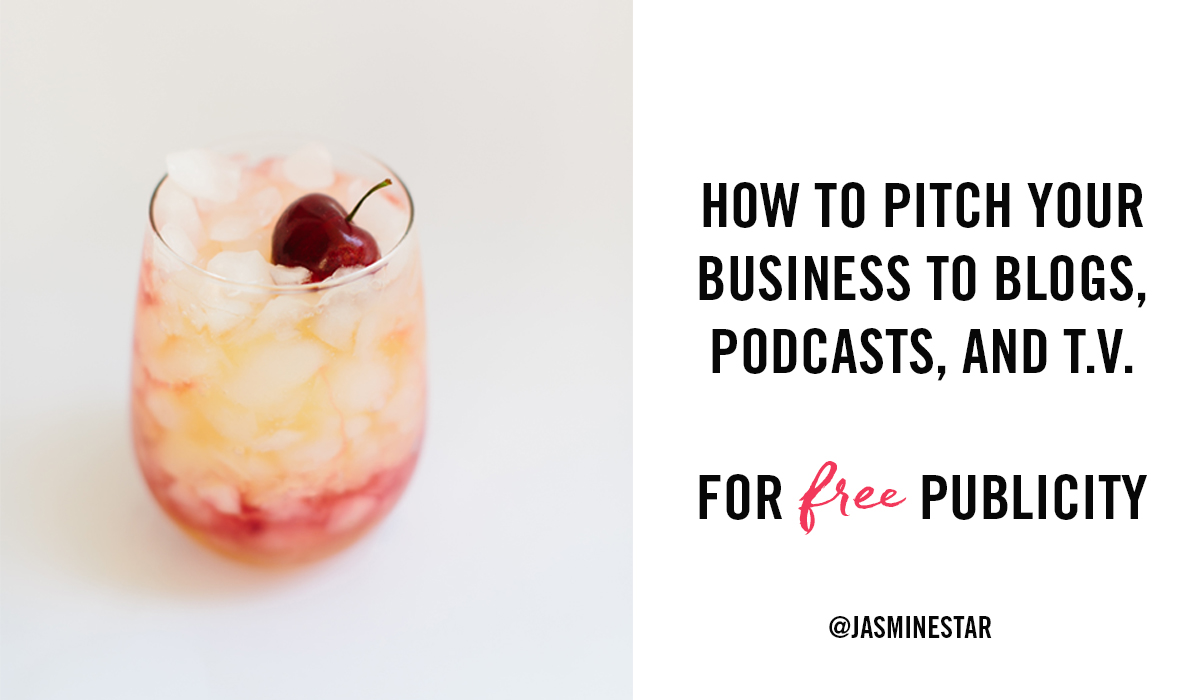This topic on “how to pitch your business to media outlets” has been on my mind a lot recently because it’s a question I often get asked. Although, my experiences of working with different bloggers, podcasters, and tv spots haven’t come through pitching to them, it did make me curious about this process. So, what did I do? I posted this question to a small Facebook group I’m a part of and the uber brilliant Selena Soo responded in such an amazing way…and allowed me to share it online. What a gem! Here’s her five components to a successful pitch:
- A catch headline
This may be the most important part of your pitch, as it will be what gets the attention of the editor, podcaster, or producer. Imagine all the submissions they are going through in a day and ask yourself, “What will make me stand out and grab their attention immediately?”
Here is an example of an attention-grabbing headline: Can Eating Chocolate Every Day Keep Heart Disease Away? If I were an editor looking to create content for a post, this is a headline that would intrigue me in a way that would make me want to read further.
- A hook
This is the first sentence of your pitch. It should be attention-grabbing and something that makes the reader want to keep reading. So, for example: Chocolate doesn’t just taste good, it’s also good for your heart!
Once you’ve caught the attention of the editor enough that they’ve opened your pitch, you need to intrigue them within the first sentence to intrigue them enough to read further; something that tells them what you’re going to present if they read further.
- A news nugget/timely tie-in
An editor is looking for information or stories that are timely and relevant right now. Most media outlets want to be the first to break a story, the latest update, the newest discovery. Because of this, your next sentence should answer this question, by telling them what about your pitch is relevant to their audience currently and why does it apply to them. This could mean basing your idea on something happening in the news, a new report, a study, or the time of year/season.
For example: A new study shows that eating two squares of chocolate a day can decrease your risk of heart disease by 20 percent. The “new study” makes this a timely statement. This isn’t referring to last year or old news…but rather, it is modified and updated information you are sharing.
Note: Some articles you pitch will be evergreen, meaning they could run at any time of year. However, you’ll be more likely to get your story accepted if you tie it to something currently pertinent to an audience. You can be viewed as an authority or having a relevant opinion by simply offering information that is timely. Let’s say you want to pitch a story about weight loss. That could run at any time of year but to make it timely, you could tie it to a season. If it’s spring, you could talk about losing weight to get your body bikini-ready for summer.

- What the article will be about
The third sentence should quickly and concisely explain what the article will be about. For example: In this article, I’ll offer three ways to add chocolate to your meals — even to breakfast! What you’re doing here is giving the big concept and then breaking it down to bite-sized pieces specifically for that audience. Your pitch will be much more impactful if you can tailor it the specific audience…are they doctors? Moms? Entrepreneurs? (Let’s be honest, us entrepreneurs would love to eat chocolate if it made us healthier and less stressed out, right?? Can I get an amen??) Be sure to hone in your topic and pitch specifically for that audience.
- Additional details or wrap-up
The final sentence of your pitch should provide additional details — the more specific the better! For example: I’ll provide the recipe for a chocolate smoothie that only takes 2 minutes to make. We’ve spoken about specificity, pointed out that chocolate is healthy, and suggested being able to eat chocolate three times a day, including breakfast. Now, if you’re going to make big claims, you need to come back with specific details, i.e. a chocolate smoothie they can make in 2 minutes. By doing this, you’ve discussed the benefit to their audience and tailored the your pitch to how the information will be consumed.
Additionally, if you are an expert, have received awards or recognition, or can position yourself as an authority to this topic, this could be a good section to mention it. Explain why you’re the perfect person to contribute.
For example: As a chef and nutrition coach, I’m filled with ideas on how to incorporate chocolate into meals. I would suggest taking it one step further by referring to a past podcast, blog post, or segment of theirs to ensure this is specific to their audience. One of the biggest complaints I hear from people are that the people pitching to their media outlets don’t even know who they are or what their audience wants to see and hear.


